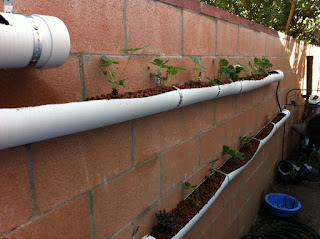So i went to go get a bunch of feeder fish at the pet store. I had wait around for ten minuets while the attendant was off doing something, somewhere. When the lady eventually arrived and asked my how many fish I wanted I said, " A Lot!" She then began to pull the fish out two at a time, many times letting one slip out of the net. Fifteen minuets later she stepped away for a minuet and I took my chance! I grabbed the net and got elbow deep in that tank! By the time the employee came back I had filled here little side tank. With a big smile on my face I said sincerely, "Thank you, I appreciate your help very much!" She stood there for a minuet watching me, probably making sure her boss did not see me arm deep in the fish tank. I think she realized she better do something instead of watch a customer netting his own fish, because she starting bagging and counting all the fish I caught!
During our dynamite duo, fish bagging operation, the employee asked, "So what are all these fish for!?" This is what I was waiting for! I began to talk about my aquaponics system and how fish waste is turns into plant food for my veggies, and by using my aquaponics system I could supplement my groceries and lower my grocery bills. I explained I was waiting to get more stocked trout from a dealer and needed to use other fish for the time being. I must not have explained my methods clearly enough cause she looked at me and said "Well you know these fish produce a lot of acid." I looked blankly back at her and said, "You mean ammonia." There was an odd silence as we stared at each other wondering what the other was talking about.
After a little more explaining to this employee about aquaponics, I had a new best friend. She walked me up to the register firing questions left and right. When I arrived at the counter to pay, the employee ringing me up jumped into the conversation too. She started with the same blank look the first employee gave me when I told her what I was doing. Regardless, I ended up talking with these nice women for another 10 minuets.
As I walked to my car I could hear them saying to each other "So he uses fish poop water to grow his veggies!..." I left with a big smile on my face. Those two ladies may not of understood entirely what I was talking about, but they got the jist of it and that's alright with me. These women probably are not going to get off work and start building sustainable habitats in their backyard. I did however plant ideas of sustainable living that can be carried and spread to others, and that is how it starts. What is most important is getting the ideas out to the people. There is power in numbers, and even if it is one person at a time we can change the world...and hey, you never know when you will get the opportunity to spread some knowledge, it could be a your local pet store.














































